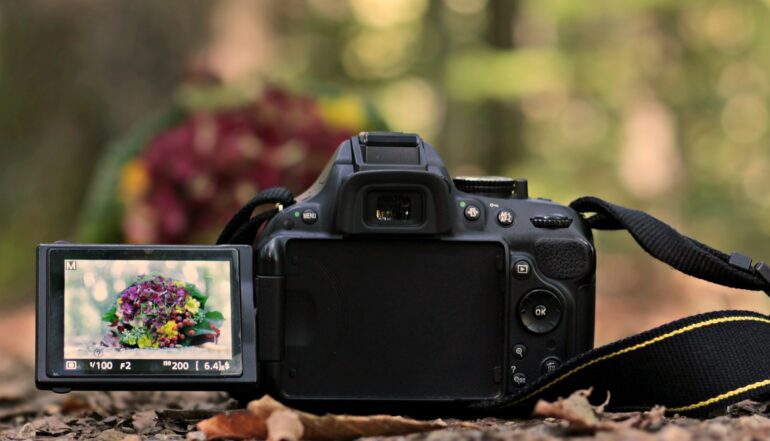TL;DR:
- Nikon, Sony, and Canon introduce technology to embed tamper-resistant digital signatures into photos.
- The aim is to verify the authenticity of images and counter the rise of AI-generated fake visuals.
- Digital signatures include date, time, location, and photographer’s details, ensuring image integrity.
- Sony plans a firmware update for existing cameras, while Canon will release an authentication app.
- This technology could be used by news publications to establish trust in their visual content.
- Challenges remain in addressing AI-generated fakes on social media and ensuring widespread adoption of this authentication standard.
Main AI News:
In a bid to combat the proliferation of AI-generated fake images and deep fakes masquerading as real content on social media platforms, prominent camera manufacturers such as Nikon, Sony, and Canon are introducing cutting-edge technology that embeds tamper-resistant digital signatures into every captured image. This innovation serves as a pivotal step towards ensuring the authenticity of photographs, a crucial issue for journalists, photo editors, and the preservation of trust in the digital age.
In an era where photorealistic AI-generated visuals have blurred the lines between fact and fiction, photographs and videos remain some of the most trusted forms of media. Consequently, it becomes imperative to establish mechanisms to verify the genuineness of these visual representations. Nikon, Sony, and Canon, recognizing the gravity of the situation, have taken the initiative to restore this sense of trust and reaffirm the significance of photojournalism.
Brian Prince, founder and CEO of the AI educational platform Top AI Tools, emphasizes the importance of this development, stating, “The importance of proving a photo’s reality cannot be overstated, especially for professionals like journalists and photo editors, whose work’s integrity is paramount. With so much AI-generated content all around us, this technology stands out as a reliable source of authenticity in a world where misinformation is common.”
The newly introduced authentication technology incorporates a tamper-resistant digital signature within each image, containing essential data such as date, time, location, and the photographer’s identity. This signature serves as a means to verify that the image remains unaltered and unadulterated. Sony plans to implement this feature in existing cameras through a firmware update, while Canon will release an image authentication app for verification purposes.
One potential application of this technology is the requirement for news publications to mandate these digital signatures from their staff and contributing photographers. This verification process assures readers that the images they encounter are genuine, though it inevitably relies on trust in the editorial integrity of the magazine or news website.
The adoption of such technology is indispensable if we intend to continue using photographs as credible evidence of real-world events. As AI-generated images approach indistinguishable realism, the need for authentication becomes more pronounced, as highlighted by Gareth Barkin, dean of operations and technology at the University of Puget Sound, who observes, “Being able to prove a photo is authentic will have important legal and cultural implications, especially as AI images become indistinguishable from the real thing.“
Nonetheless, the implementation of this authentication tool, even by all camera manufacturers, only aids honest photographers in proving their authenticity. It does not address the issue of AI-generated fakes disseminated through social media or unscrupulous media outlets. The invasion of Palestine last year saw a surge in fabricated images on social media platforms, where AI-generated visuals were presented as authentic, while some genuine images were misattributed to Gaza. Confoundingly, certain AI-spotting tools incorrectly identified authentic photos as fakes. Furthermore, Adobe was even found selling AI-generated “photos” depicting the destruction of buildings in Gaza.
To combat this proliferation of deceptive imagery, it would be imperative to ensure that all cameras, including older models and phone cameras, incorporate the same watermarking feature. According to Barkin, “To give us the tools we need to really distinguish AI-generated images from real photos and return trust to photography, all camera and phone manufacturers would need to sign on to this digital signature standard.” This would necessitate educating the public on how to verify these watermarks effectively and addressing sources that claim images to be “100% genuine real, not fake” when sharing them on social media.
Indeed, this undertaking poses a significant challenge and potential upheaval in our relationship with photography, a medium that has been trusted for over a century. As photographer Crissibeth Cooper aptly summarizes, “When we trust a photo, we trust the photographer’s eye, their intention, and their ability to capture a genuine slice of reality. This trust allows us to engage with the image on a deeper level, to connect with the emotions or perspective it conveys. It’s this element of trust that gives photography its power to move us, inform us, and even challenge our ideas.”
Conclusion:
The introduction of tamper-resistant digital signatures by camera manufacturers is a crucial step towards safeguarding the authenticity of images in an era of AI-generated fakes. This innovation will primarily benefit professionals like journalists and photo editors while addressing the broader issue of trust in photography. However, challenges persist in combating deceptive imagery on social media and achieving universal adoption of this authentication standard. The market may see increased demand for cameras equipped with such features, emphasizing the growing importance of image authenticity in the digital age.

